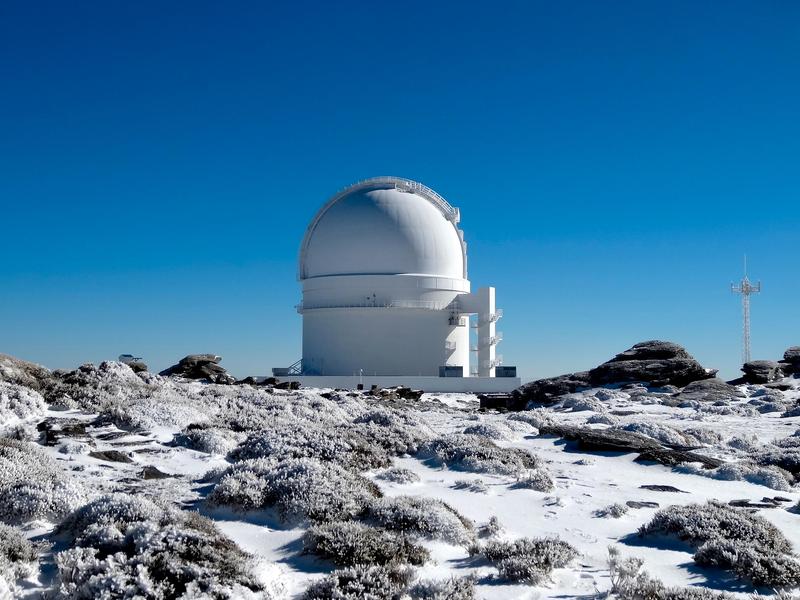

Dome of the 3.5 m telescope on Calar Alto, Southern Spain, the largest telescope in continental Western Europe.
Photo: Carmenes
Since 2016, German and Spanish researchers, among them scientists from the University of Göttingen, have been hunting for exoplanets with the “Carmenes” spectrograph. They now discovered their first star with an exoplanet: The planet is called HD 147379b and is slightly more massive than Neptune. Its star is a so-called M-dwarf only about half as massive as the Sun. The findings were discussed at a Science Meeting in Göttingen and published in Astronomy & Astrophysics.
HD 147379b orbits its star once every 86 days at a distance that is only a third of the distance between Earth and the Sun. At this location, the planet is located inside the so-called habitable zone where water could exist in liquid form. However, it is unlikely that life could develop on this planet because it probably has no solid surface.
“Carmenes is optimized to find planets inside the habitable zones of low-mass stars because this is where we believe the chances that life can develop are highest,” says Professor Ansgar Reiners from Göttingen University’s Institute for Astrophysics. “Finding our first planet right at this place shows that our search for planets in the habitable zone is very efficient.”
Carmenes was planned and built by eleven partners from Germany and Spain, among them the Institute for Astrophysics at Göttingen University. “Carmenes is the first spectrograph that simultaneously looks at optical and infrared light,” explains Professor Stefan Dreizler at the Institute for Astrophysics in Göttingen. “This is an important advantage for the search for planets around low-mass stars.” Carmenes consists of two spectrographs that were optimized for the search for planets around nearby stars.
The project runs at least until 2020. The scientists hope to be able to extend their program beyond this date. “The discovery of an Earth-like planet often requires more than one hundred measurements,” says Göttingen astronomer Dr. Mathias Zechmeister. “We are searching for these planets around hundreds of stars, and for this we need very large amounts of telescope time.” The German Research Foundation (DFG) supports the project through a research unit at the University of Göttingen. Further information can be found online at http://carmenes.caha.es.
Original publication: Reiners, Ribas, Zechmeister et al. HD 147379b: A nearby neptune in the temperate zone of an early M dwarf. Astronomy & Astrophysics 2017. Doi: 10.1051/0004-6361/201732165.
Contact:
Prof. Dr. Ansgar Reiners
University of Göttingen
Faculty of Physics
Institute for Astrophysics
Phone +49 551 39-13825
Email: ansgar.reiners@phys.uni-goettingen.de
Web: http://www.uni-goettingen.de/de/216896.html
Prof. Dr. Stefan Dreizler
University of Göttingen
Faculty of Physics
Institute for Astrophysics
Phone +49 551 39-5041
Email: dreizler@astro.physik.uni-goettingen.de
Web: http://www.uni-goettingen.de/de/216891.html












